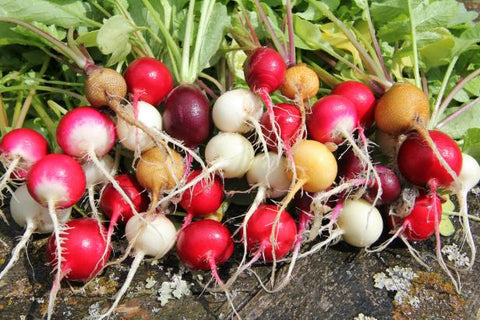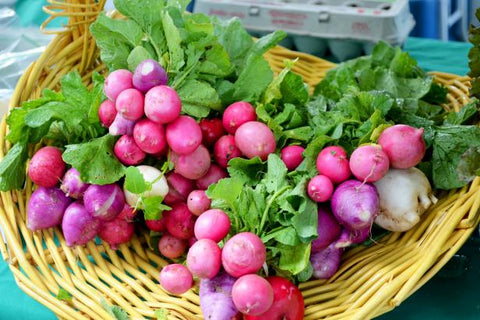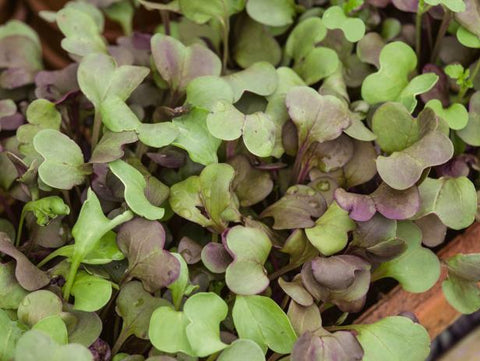Radishes might not be at the top of your list when planning your spring or fall garden, but don't underestimate them. These humble vegetables take up minimal space and can be planted alongside other crops. Radish seedlings sprout quickly, making them excellent row markers. Sliced or diced, radishes add crunch and flavor to pasta, salads, and various dishes. You can even carve them into decorative shapes for garnish.

Choosing Which Radish Varieties to Grow
If you think radishes (Raphanus sativus) are too spicy, you probably haven't tried the right varieties. There's a wide range to choose from, offering flavors ranging from spicy and pungent to earthy, sweet, or mild. Radish shapes vary from round to cylindrical, with skin colors including white, yellow, green-red, pink, red-purple, or black, with white flesh being common. For milder flavors, opt for lighter or white varieties.
Preparing the Planting Site

Select a location that receives at least six hours of sunlight daily, preferably with morning sun. Then, till the soil to a depth of at least six to eight inches, removing rocks, sticks, and debris. Before planting radish seeds, test the soil in your garden to determine if any amendments are needed. Radish plants require well-draining, slightly acidic to neutral soil with a pH of 6.0 to 7.0.
Adding Organic Matter
Work several inches of compost or well-rotted manure into the soil before planting radishes, avoiding fresh manure that may introduce weed seeds and harmful bacteria. Additionally, mix in some general-purpose fertilizer, such as 10-10-10, following the instructions on the package, before sowing seeds. Water the soil thoroughly until moist before seeding.
Planting Radishes
When do radishes grow best?

These root vegetables thrive best before the weather turns too warm. Plant radishes from seeds in early spring, about four to six weeks before the average date of the last spring frost. In the fall, sow seeds about four to six weeks before the first expected fall frost. Radish seedlings typically emerge in three to four days, but some varieties may take weeks.
In the Garden

Radishes come in two basic types: spring and winter. So-called spring radishes, like "Cherry Bomb" and "French Breakfast," can be harvested in less than a month, making them ideal for planting before temperatures rise in early spring. Winter radishes, such as "China Rose," can be planted in early fall. They take longer to mature but store well and can remain in the ground longer before harvesting.
Caring for Radish Plants
Consistent Watering
If your radish plants receive less than an inch of rainfall per week, water them. Sandy soils may require more frequent watering.
Keep the soil around radish plants moist but not waterlogged. Inconsistent watering can result in tough roots, while too much water can cause them to split or crack.
Fertilize Once
Radishes are not heavy feeders, and they mature quickly, so use a general-purpose fertilizer at planting time and refrain from further fertilizing. Excessive nitrogen or overly rich soil will result in more foliage than roots.
Regular Weeding

Weeds can crowd out radish plants. Remove weeds as needed or carefully cultivate around radish plants with a hoe. Mulching with a thin layer of weed-free straw, untreated grass clippings, or compost also helps control weeds and maintain soil moisture.
When to Harvest Radishes

When they're ready, pull up your radish plants. If the ground is hard, gently loosen it with a garden fork or trowel.
Storing Radishes
Trim off the tops and tails of radishes, wash and dry them, and place them in plastic bags in the refrigerator. Washed, dried vegetables should be stored separately and used within three days. You can also freeze unpeeled radishes, although freezing will alter their texture. For best results, blanch them first.









